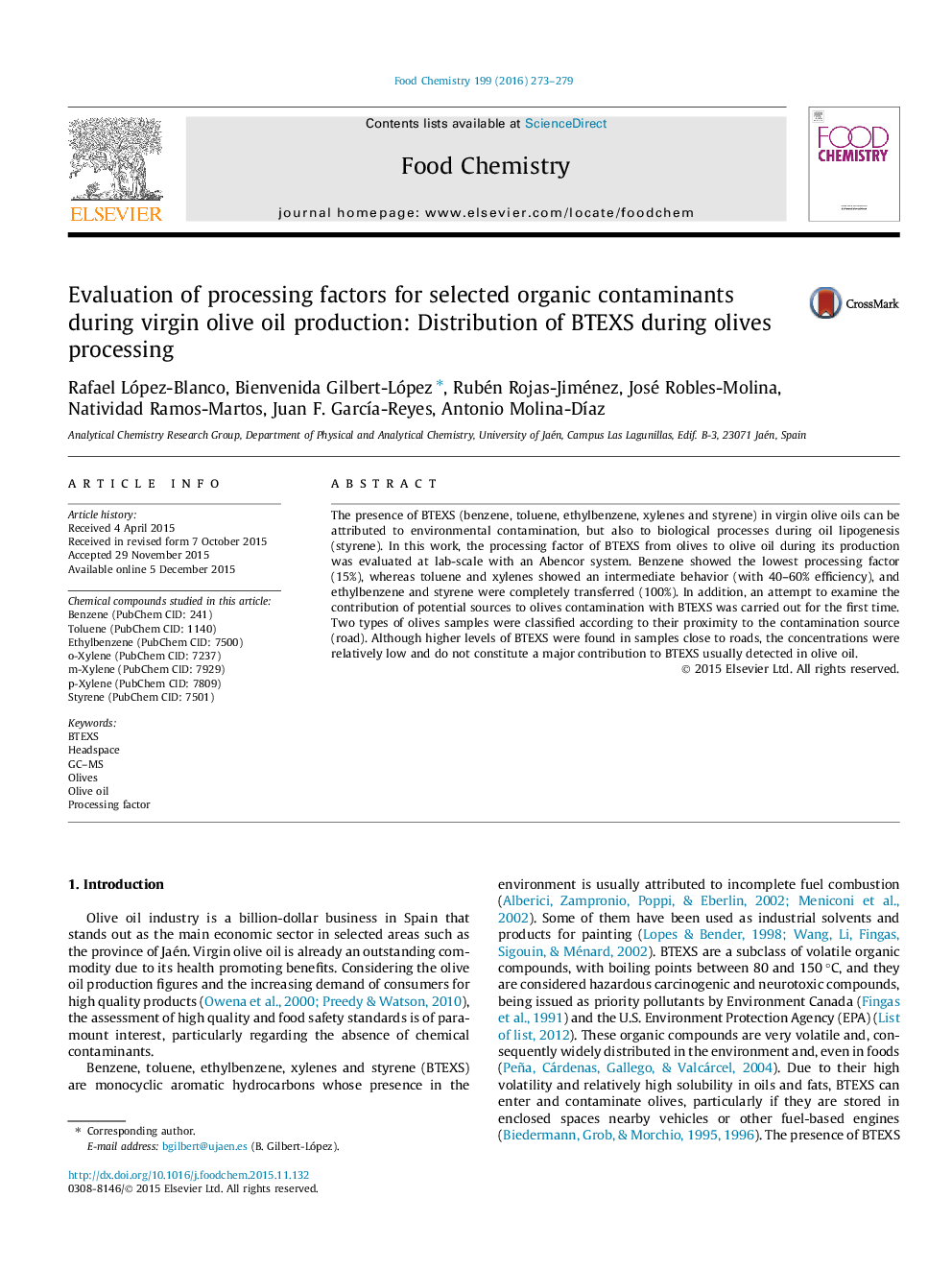| Article ID | Journal | Published Year | Pages | File Type |
|---|---|---|---|---|
| 7589689 | Food Chemistry | 2016 | 7 Pages |
Abstract
The presence of BTEXS (benzene, toluene, ethylbenzene, xylenes and styrene) in virgin olive oils can be attributed to environmental contamination, but also to biological processes during oil lipogenesis (styrene). In this work, the processing factor of BTEXS from olives to olive oil during its production was evaluated at lab-scale with an Abencor system. Benzene showed the lowest processing factor (15%), whereas toluene and xylenes showed an intermediate behavior (with 40-60% efficiency), and ethylbenzene and styrene were completely transferred (100%). In addition, an attempt to examine the contribution of potential sources to olives contamination with BTEXS was carried out for the first time. Two types of olives samples were classified according to their proximity to the contamination source (road). Although higher levels of BTEXS were found in samples close to roads, the concentrations were relatively low and do not constitute a major contribution to BTEXS usually detected in olive oil.
Related Topics
Physical Sciences and Engineering
Chemistry
Analytical Chemistry
Authors
Rafael López-Blanco, Bienvenida Gilbert-López, Rubén Rojas-Jiménez, José Robles-Molina, Natividad Ramos-Martos, Juan F. GarcÃa-Reyes, Antonio Molina-DÃaz,
